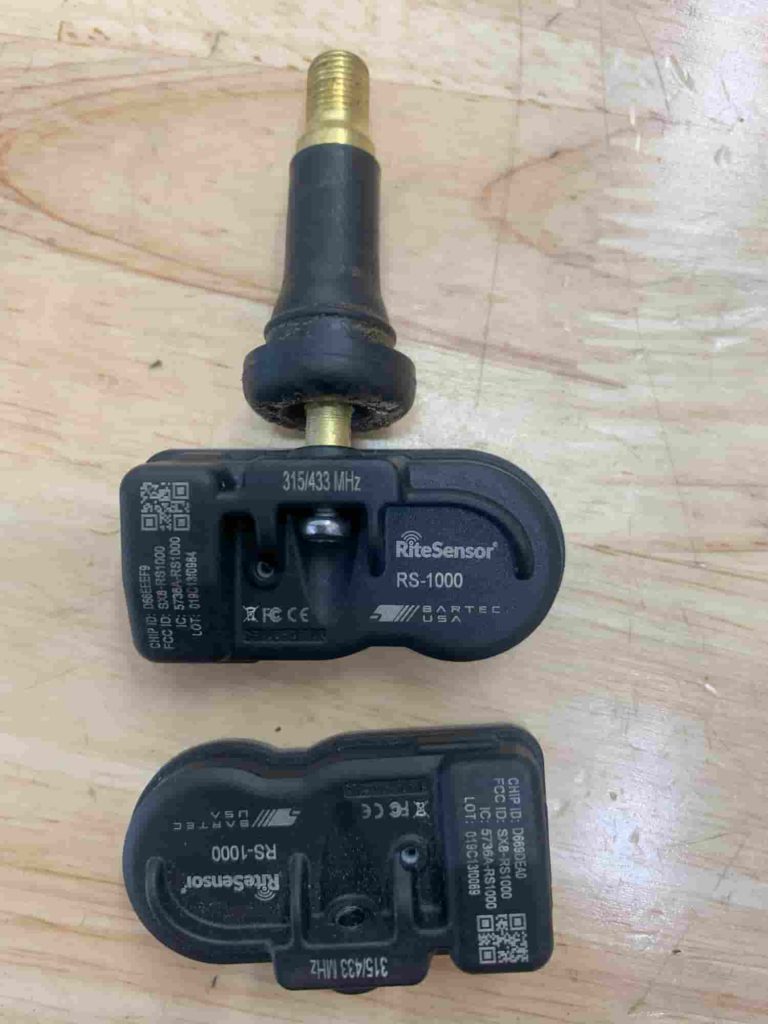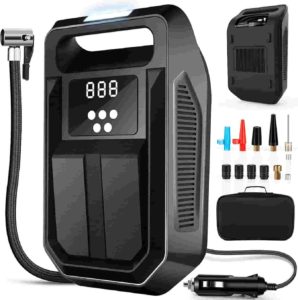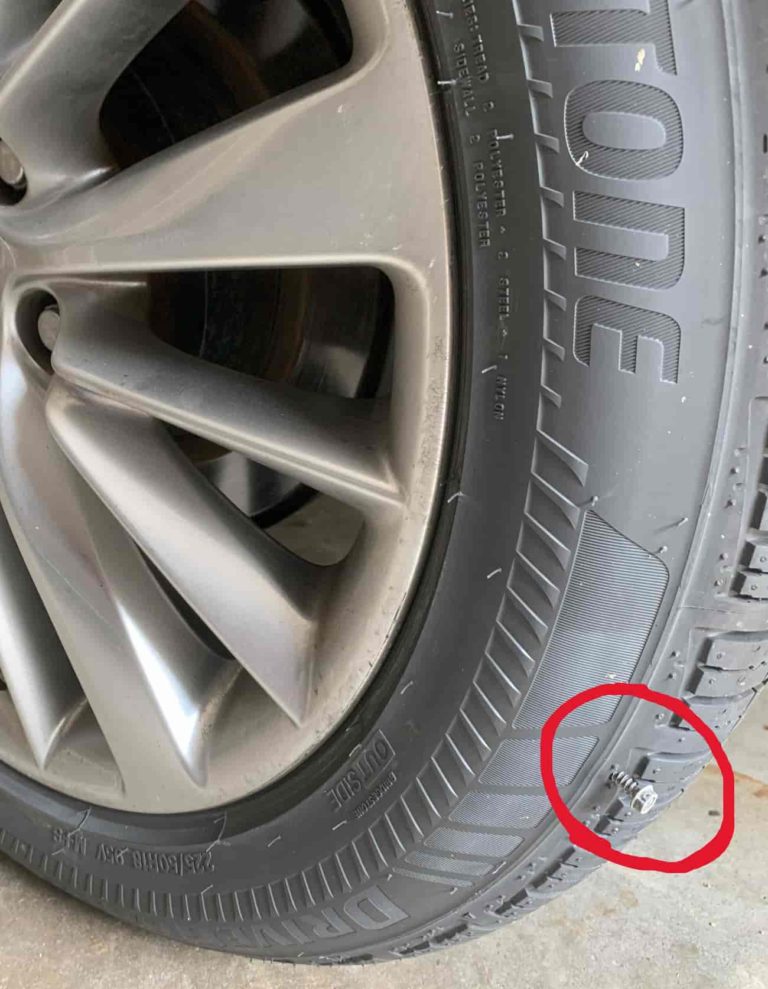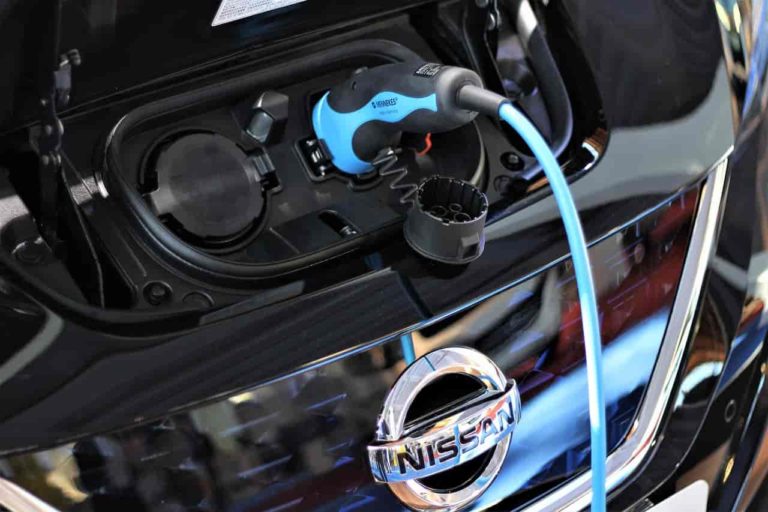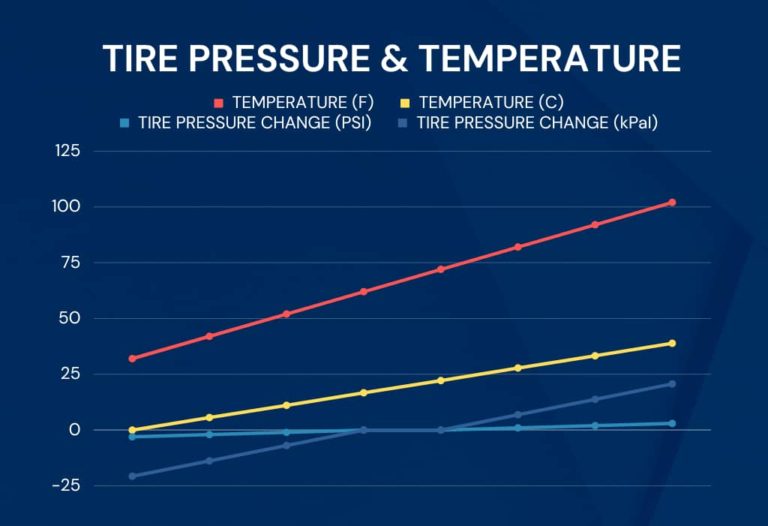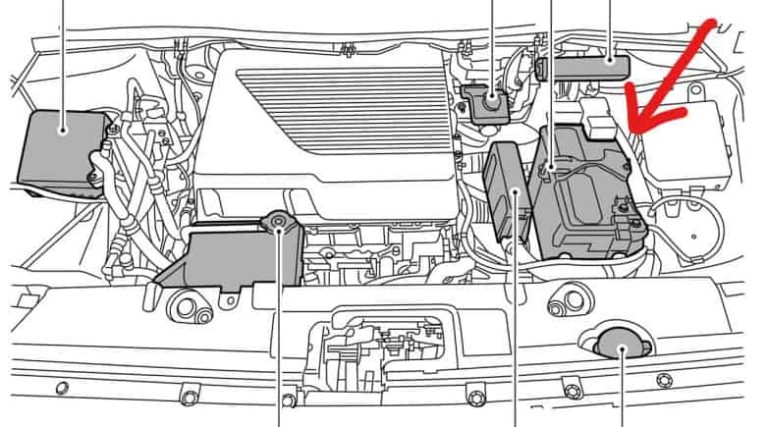What is the Nissan Leaf TPMS?
Ever been puzzled by the tire pressure light on your Nissan Leaf? This comprehensive guide will illuminate your path to understanding and resetting it. From adjusting tire pressure to troubleshooting the Tire Pressure Monitoring System (TPMS), we’ve got you covered. Learn how to maintain optimal tire pressure, understand the effects of weather on your tires, and even discover how to identify and fix a tire leak. This is your one-stop resource for all things related to your Nissan Leaf’s tire pressure light. Let’s deflate the complexity and inflate your knowledge!
How to Reset the Nissan Leaf Tire Pressure Light
The Nissan Leaf does not have a tire pressure reset button.
Park the vehicle in a safe place and turn the engine off.
Adjust the tire pressure in all four tires to the recommended COLD tire pressure, 36 Psi.
After adjusting the tire pressure, drive the vehicle at speeds above 16 MPH (25 km/h). The low tire pressure warning light does not automatically turn off when the tire pressure is adjusted. After the vehicle speed reaches 16 MPH (25 km/h), the light will turn off.
If the low tire pressure warning light flashes for approximately 1 minute and then remains on after you turn the ignition switch to the ON position, the TPMS is not functioning properly. (read more about TPMS malfunction below)
If the light doesn’t go off right away, re-check your tire pressure to make sure they are all at the exact pressure you set them to. If the pressure has decreased, you probably have some sort of leak in that tire.
If your tires are not losing air and the tire light still won’t go out, try overfilling your tires by about 10 Psi. So, fill them to 45 Psi and then drive the car for a few minutes. The tire light should reset. Remember: DO NOT leave the tires at this level, release the extra 10 Psi afterwards.
NOTE: The tire pressure monitoring system (TPMS) will not turn off the low tire pressure warning light until the tire pressure is set to the recommended pressure and the vehicle is driven at speeds above 16 MPH (25 km/h). If you’ve completed these steps and the tire light STILL won’t go out, There is only one of three things that can be the problem. Either have a faulty tire pressure sensor in one of your wheels OR you have a leak OR your receiver module (control unit) is not communicating with your sensors (this is the least of all likely and is rare).
2023 Nissan Leaf Tire Pressure
TIRE SIZE | FRONT PSI | REAR PSI |
205/55R16 | 36 | 36 |
215/50R17 | 36 | 36 |
SPARE TIRE | 60 | 60 |
Nissan Leaf Tire Settings
How to Turn Off the Tire Maintenance Reminder Light
Park the vehicle in a safe location and apply the parking brake.
Turn the power switch to the ON position. Do not start the electric motor.
Use the steering wheel switches to select the “Settings” menu on the vehicle information display.
Select “Vehicle Settings“, then “Tire“, and finally “Tire Maintenance“.
Select “Reset“, then “Yes“.
The tire maintenance reminder light should now be reset.
How to Change Tire Pressure Units
Press the “MENU” button on the control panel.
Use the touch-screen to scroll to “Settings“.
Then select “Vehicle Settings“.
After that, select “Tire Pressures“.
Finally, select the desired pressure unit (PSI, kPa, or bar).
How Does the Nissan Leaf TPMS Work?
The Tire Pressure Monitoring System (TPMS) in the Nissan Leaf works as follows:
Sensors: Each tire, including the spare (if provided), has a tire pressure sensor mounted in the tire valve stem. These sensors measure the pressure and temperature inside each tire.
Transmission of Data: The sensors transmit the tire pressure levels and temperature data to the vehicle’s computer system.
Monitoring: The system continuously monitors the pressure in each tire while the vehicle is being driven.
Alerts: If the system detects that the pressure in one or more tires is significantly below Nissans recommended level, it will alert the driver by illuminating the TPMS warning light on the dashboard.
Warning Light: The TPMS warning light looks like a yellow exclamation point inside a tire cross-section. If this light illuminates while driving, it means that one or more of your tires may be significantly underinflated.
Sensor Battery Life: The TPMS is an electronic system and the sensors have batteries that will eventually run out. The batteries are designed to last for about 5 – 10 years, depending on the vehicle’s usage and driving conditions. The batteries are sealed within the sensor’s casing and are not replaceable. When the batteries are dead or dying, the entire sensor must be replaced.
What is the TPMS Malfuncion Indicator?
The Nissan Leaf’s tire pressure system also has a malfunction indicator to alert you when something is wrong with the system itself. The indicator uses the same yellow exclamation point as the low tire pressure light. The difference is that, if there is a problem with the system, the light will flash for about 60 seconds before staying on. This flashing or blinking will happen every time you start your Leaf until the issue is resolved. When your tire light is flashing your Leaf will not be able to give you accurate pressure readings. Basically, a blinking tire pressure light means there is a malfunction within the TPMS itself, rather than an air pressure issue. This is usually due to a faulty pressure sensor in one of your tires (a dead battery) or driving with the spare tire. (if the spare doesn’t have a sensor in it) To figure out which sensor is malfunctioning or faulty, use a TPMS diagnostic tool and scan each sensor for diagnostic information or bring your car to a professional.
What Causes a TPMS Malfunction?
Using non Nissan wheels or tires.
Electronics that use the same radio frequencies can interfere with the TPMS, leading to operational issues. Things like radios, walkie talkies and even security systems can create interference.
Heavy window tinting on your Leaf could potentially disrupt the radio signals being transmitted between the TPMS sensors and the receiver.
In the event of significant snow or ice build-up on or around the tire valves,
If wheels without tire pressure sensors are installed on the car. Most spare tires do not have sensors in them. (if you have a full size wheel, it has a sensor)
If the tire pressure is extremely high.
If new tire pressure sensors are installed without registering the new sensor IDs with the Leaf’s receiver module/ECU.
Understanding the Causes: Why Your Tire Light is On
Seasonal temperature changes: A drop in ambient temperature can cause tire pressure to decrease, triggering the warning light.
Tire puncture or leak: A sharp object or road debris like a nail or screw may puncture a tire, causing air loss which will of course activate the warning light.
Faulty tire pressure sensor: Damaged or malfunctioning sensors may provide inaccurate readings, resulting in a false alert. The only way to determine which sensor is faulty is to scan each sensor with a TPMS diagnostic tool.
Valve stem issues: A damaged or leaking valve stem can lead to gradual pressure loss and eventual activation of the tire pressure light. They make kits to replace the rubber gasket that usually goes bad.
Tire damage: Impact from potholes or hitting a curb can cause structural damage like tire bubbles, leading to pressure loss.
Sensor battery life: TPMS sensors are battery-powered, and over time, batteries die. (they usually last anywhere from 5-10 years) This will cause the tire pressure light to turn on. Again, you must use a diagnostic tool to determine which sensor is dead or dying.
Recent tire rotation or replacement: If the tires have been recently rotated or replaced, the TPMS may need recalibration to avoid false alerts. Sometimes the vehicle’s computer may think the front tires are in the rear and rear in the front after a rotation.
Wheel or rim issues: Damaged, corroded, or cracked wheels or rims can lead to air leaks and pressure loss. This is very common with low profile tires.
Altitude changes: Climbing or descending in elevation can affect tire pressure and trigger the TPMS warning. An additional 1.5 Psi per Km above sea level is required.
Natural pressure loss: Tires lose air pressure over time due to temperature changes and permeation. Tire dry-rot will happen to tires that sit.
Electrical problems or software issues within the car’s TPMS system. Occasionally the system may have a software update from Nissan.
Snow Tires: If you have a separate pair of wheels/rims for your snow tires, you can either transfer the sensors from your summer wheels or acquire an additional set of 4 sensors for the second pair of wheels/rims. However, if you are using the same wheels for both sets of tires, there is no need to be concerned about this.
Identifying the Source of Your Tire Leak
Begin by determining which tire is low on air by checking all 4 tires manually and add air to the underinflated tire. Next, take a spray bottle and fill it with a mixture of water and soap, or you can use a solution like Windex. Proceed to spray this solution over the entire underinflated tire, ensuring you cover the bead (the area where the tire connects with the wheel), all of the tread, and the valve stem. After waiting for a few moments, inspect the entire tire for the emergence of tiny bubbles. If there’s a leak in the tire that’s been sprayed with the soapy solution, the escaping air will form small bubbles at the site of the puncture.
Is it Safe to Use Tire Plugs?
Absolutely. I have personally used tire plugs on thousands of tires and have encountered very few problems. Tire plugs are a reliable and efficient method for fixing punctures in the tread area of a tire. They are designed to be inserted directly into the puncture created by a foreign object, such as a nail or screw, effectively sealing the hole. The material used for the plug is a robust rubber-like compound that can withstand the tough conditions inside a tire, including fluctuations in heat and pressure. If applied correctly, a tire plug can last for the rest of the tire’s lifespan, allowing you to drive safely without needing to immediately replace the tire. However, it’s important to note that plugs should not be used on the sidewall of a tire.
How to Adjust Tire Pressure
Make sure the tires are cold. If your vehicle has been driven, wait at least three hours before checking the tire pressure.
Remove the valve cap from the tire.
Press the tip of the tire pressure gauge onto the valve and read the pressure.
If the tire pressure is below the recommended level, fill the tire with air until the recommended pressure is reached. If the tire pressure is above the recommended level, release air until it reaches the recommended pressure. (Press the metal stem in the center of the tire valve. You can use any object like a screwdriver to do this. Be gentle.)
After adjusting the tire pressure, don’t forget to put the valve caps back on to prevent leaks and keep dirt and moisture out.
Repeat this process for each tire, including the spare if applicable.
What are the Effects of Underinflated or Overinflated Tires?
When tires are underinflated or overinflated in your Nissan Leaf, several issues can arise:
Decreased Battery Range: Underinflated tires increase rolling resistance, which means the electric motor has to work harder to move the car, reducing your range.
Increased Tire Wear: Both underinflation and overinflation can lead to uneven tire tread wear. Underinflated tires tend to wear more on the edges, while overinflated tires wear more in the middle.
Reduced Handling: Overinflated tires can make the car feel more ‘bouncy’, reducing grip and making the car harder to control. Underinflated tires can make the car feel sluggish and unresponsive.
Increased Risk of Tire Damage: Underinflated tires are more susceptible to damage like punctures. Overinflated tires are more likely to be damaged by potholes or curbs.
Increased Risk of Blowouts: Overinflated tires are more prone to blowouts, especially in hot weather or at high speeds.
TPMS Warning: The Tire Pressure Monitoring System (TPMS) in your Nissan Leaf will alert you if your tires are significantly underinflated or overinflated.
Is it Safe to Drive the Leaf with Low Tire Pressure?
It’s generally okay to drive for a short time if the TPMS light comes on, but it’s very important to fix the issue as soon as you can. Driving for a long time with the wrong tire pressure can cause a lot of problems. It’s a good idea to find out why the light is on. Do you have a small leak? Is there a nail in your tire? Is there a problem with the bead seal between the tire and the wheel? Is the tire losing air slowly or quickly? Find out what’s wrong, understand how serious it is, and take action quickly. Remember, safety should always be your top priority!
How Does the Weather Affet Tire Pressure?
Weather plays a significant role in the tire pressure of your Nissan Leaf. As temperatures drop, so does your tire pressure. This is because cold air contracts, leading to lower pressure inside your tires. Conversely, as temperatures rise, the air inside your tires expands, potentially causing overinflation. This fluctuation can impact your Leaf’s performance, efficiency, and safety (and cause the tire light to turn on!). So, whether it’s the chill of winter or the heat of summer, remember to check your tire pressure regularly! A general rule of thumb states that for every 10-degree Fahrenheit change in temperature, tire pressure will decrease or increase by approximately 1 psi in the same direction.
What is "Cold Tire Pressure"?
To get an accurate tire pressure reading on your Nissan Leaf, it’s recommended to check it when your vehicle has been stationary for a while, preferably in the morning. This is known as checking the “cold pressure“, which is ideally done when the vehicle hasn’t been used for about three hours or longer. The reason behind this is that as you drive the tires warm up, causing the air inside to expand which can lead to higher pressure readings. So, it’s advisable not to adjust tire pressure right after driving, as this will result in overinflated tires!
Guide to Installing and Calibrating New Tire Sensors
The process of installing new TPMS sensors into a wheel involves several important steps, typically carried out during tire replacements. The tire is first removed from the wheel, followed by the careful extraction of the old sensor. The sensor’s base is detached, and then the valve stem is pulled out from the top of the wheel using a tire valve tool puller. Subsequently, the new sensor is fitted into position. It’s essential to verify that the new sensor is compatible with your vehicle’s TPMS system (either using 433 Mhz or 315Mhz). After the new sensor is installed and the tire is mounted back onto the wheel, the sensor needs to be registered with the vehicle’s Electronic Control Unit (ECU). This procedure, often termed as “relearning,” entails programming the new sensor’s unique ID number into the ECU so it can recognize signals from the new sensor. (It’s a good idea to take a picture of each new sensor before installation to have the ID number handy.) This process can differ by vehicle; while some newer models can perform this process automatically, most vehicles require a TPMS relearning tool. The basic concept is to scan each of the four mounted sensors and then allow the tool to synchronize with the vehicle’s ECU. Always consult the vehicle’s manual or manufacturer’s guidelines for precise instructions.
Reset the Entire System
Despite being an electric vehicle, the Nissan Leaf still utilizes a 12 Volt battery. If you’ve exhausted all other options and nothing seems to work, you can disconnect the main 12 Volt battery. Begin by disconnecting the negative terminal first to prevent any potential short circuits (a 10 or 12mm wrench will be needed). This action will cut off power to the ECU (engine control unit), leading to the erasure of any error codes stored by the computer (The tire pressure light is considered an error code). This method should be used only as a last resort. Disconnecting the battery will cause the computer to lose its adaptive memory settings. As a result, after reconnecting the battery, your Leaf may need to undergo a “relearning” process. During this process, it recalibrates sensors and actuators to ensure optimal operation. To complete this relearning process, drive your Leaf for at least 30 minutes at speeds over 50Mph.
Conclusion
And there you have it – your complete guide to mastering the intricacies of the Nissan Leaf’s tire pressure light. From resetting the light to understanding the TPMS, we’ve journeyed through the essential steps to ensure your Leaf’s tires are in top shape. Remember, maintaining the right tire pressure is not just about extinguishing that warning light; it’s about ensuring optimal performance, safety, and longevity of your tires. So, keep this guide handy, and you’ll never be left deflated by tire pressure issues again. Happy and safe driving! Everything in this article is applicable to all Nissan Leaf models and trims. Including Leaf S and Leaf SV Plus.
Please note that this blog post contains Amazon affiliate links. This means that if you make a purchase through one of these links, we at TPMSRESET.com may earn a small commission at no extra cost to you. We only recommend products that we personally use and believe in. Thank you for supporting us.


